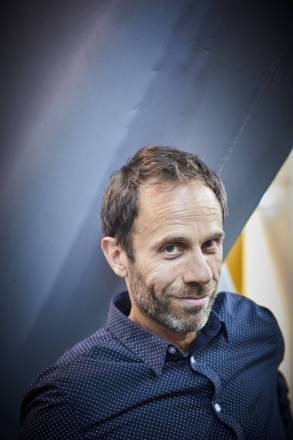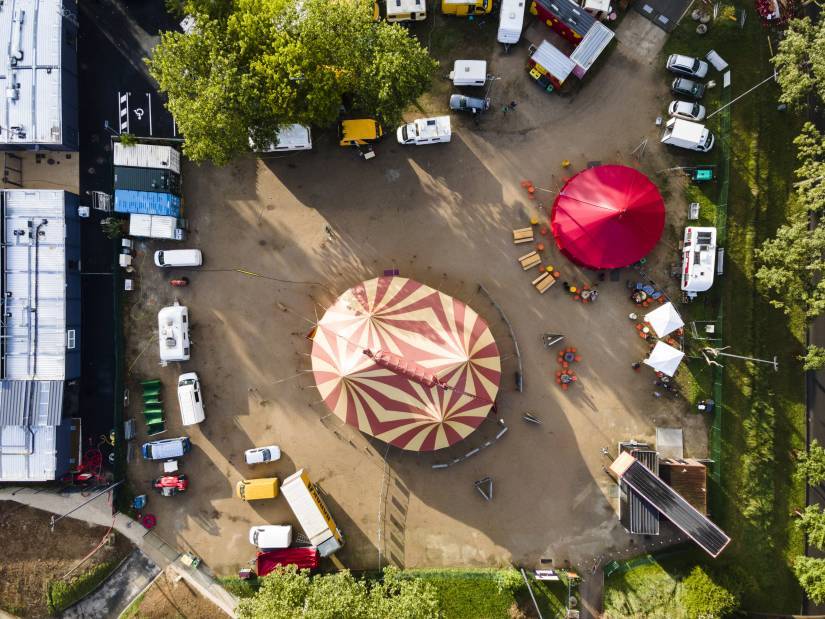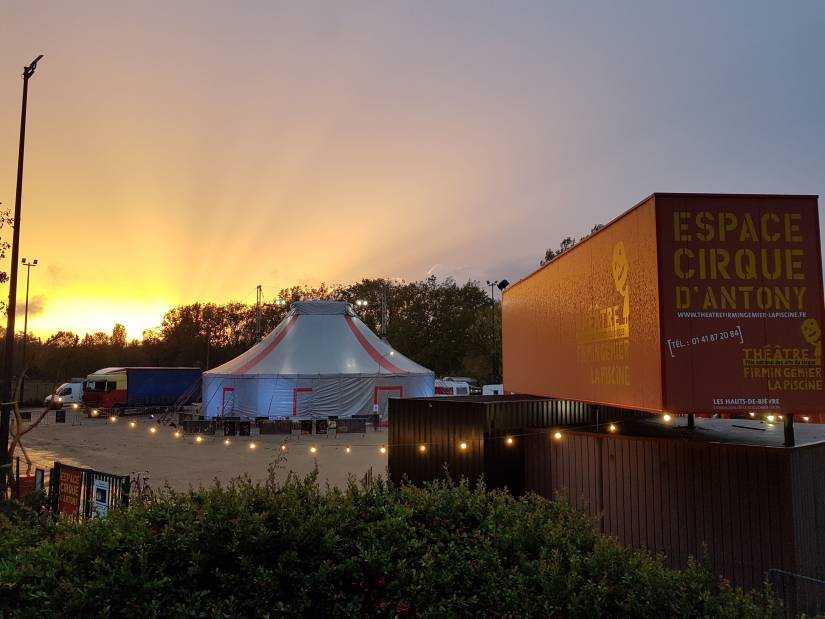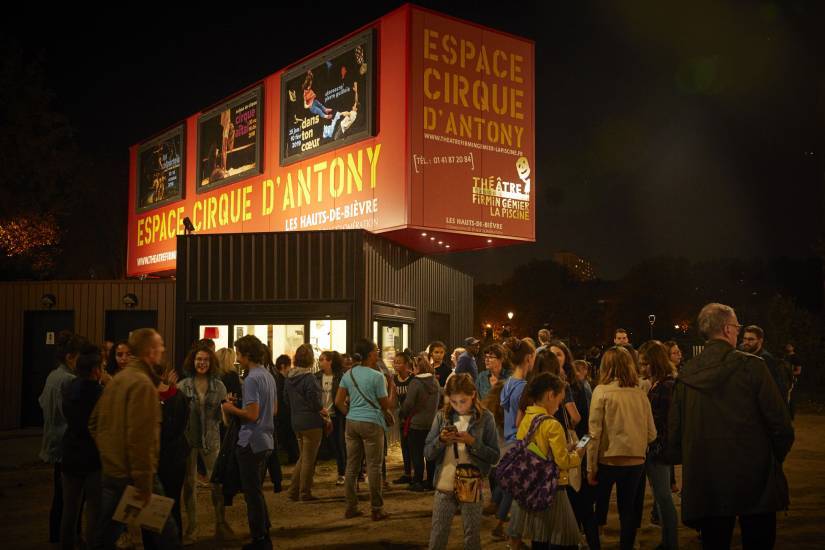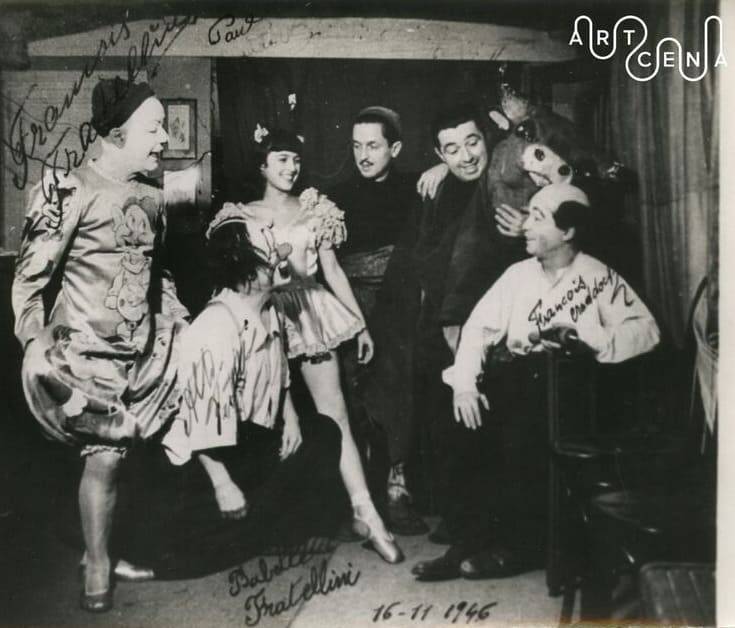A strong marker of the circus identity, the capital is often presented as «the anti-cathedral of culture». A clear sign of modernity, at a time of hospitality and inclusion.
Mobile, artistic, inclusive, popular, the circus under marquee has everything for him. It goes to meet its public, under the sign of reciprocal hospitality, in the margins of the large agglomerations and in the territories remote from cultural facilities. And it is proving to be a particularly effective tool for the decentralization of live entertainment.
Marc Jeancourt leads the Azimuth, which brings together on Antony and Châtenay-Malabry two theatres (Firmin-Gémier, La Piscine) and Antony’s Circus Space, a large open ground dedicated to the reception of the capitals of the contemporary circus. This is where, on Monday, November 7, 2022, a round table organized by the Ministry of Culture will be held around the question: "The big top, a tool for the future?"
To better understand the stakes of this round table, which will explore this singular scenic space, strong marker of the identity of the circus, Marc Jeancourt has kindly offered us a little of his experience of nearly twenty years at the service of contemporary circus companies passed by Antony. Maintenance.
Marc Jeancourt, what is the place of the tent in the contemporary circus?
It is the main tool of this complete art, which values artistic writing as much as performance, and has been developing continuously for fifty years. It should be noted that the contemporary circus was born under a tent, in the 70s, when young artists, who came from the theatre or from popular education, had a huge desire for audacity, provocation, music, street theater, and found themselves in the fairground dimension of the traditional circus, a bit romantic certainly, such as at Fellini in the Strada, or at Chaplin in Le Cirque.
These artists live the tent: it is at the heart of their artistic research. They have this amazing ability to wrap it in different scenographies, which produce beautiful and moving effects. On the public side, we know that the canvas of a capital is less intimidating to cross. The capital is the anti-cathedral of culture!
Finally, at the reception of these shows, adults quickly understand that this artistic language speaks to them and that, moreover, this language is accessible to their children. The big top has an amazing capacity for reception and inclusion.
Does the capital fit easily into the fabric of the urban metropolises we know?
Easily, of course not. On the urban side, the tendency is to reduce to the maximum the available land. Spaces that remain empty are equipped with street furniture that make the installation of a capital almost impossible. And yet, these unqualified spaces are opportunities to seize. It is then necessary to count on visionary elected officials, endowed with a real political courage and convinced that art and culture, including in the less institutional forms of the capital, have a decisive role to play in the margins of these large cities where life is not easy every day.
What can a big top bring to the atmosphere of a city?
See how things are at home in Antony. The companies come with their own tent: it is both the soul of their scenography and their daily work tool. Strange phenomenon: we, who have the responsibility of this space, welcome them, and they, in return, welcome us under their tent. These reciprocal hospitalities “horizontal” relationships, so to speak. The whole organization of their stay is strongly affected, including by the Antonians, who are happy to come and see them on foot from home.
For twenty years, a history has been built in Antony. A local history, which involves the entire pool of life that surrounds us, and, moreover, a national history, because all people who are interested in contemporary circus know the way!
However, the scarcity of available space keeps the big city capitals apart…
Indeed, eleven of the fourteen National Circus Poles are in medium-sized cities. And here the capital shows that it is the tool of mobility. It allows people to go where they are, away from cultural facilities. It is really a tool of rapprochement which, by its mobility and flexibility, finely completes the territorial network implemented by the State.
What future is there for this art under capitals?
On the one hand, there is the ecological question: for example, research on the thermal insulation of marquee fabrics will have to continue. This is one of the major projects before us.
But, now that the profession is very structured, the main thing will be to continue to support, with sufficient means, what is called the writing under marquee. The contemporary circus, in fact, is a very special way of life. What is a big top, basically? A show under a canvas, a convoy that transports it, people living in caravans, companies often run by couples, a professional life related to privacy. The artists project body and soul into creation and have a very special relationship of hospitality with the cities of implantation. This is what makes it a unique art, which must be taken care of.
Roundtable moderated by Évelyne Laquit, Delegate for Information and Communication of the Ministry of Culture, with the participation of Benoist Apparu, Mayor of Châlons-en-Champagne, Pauline Bardoux, Circassian artist, aerial acrobat and artistic director of Envolée Cirque, Marc Jeancourt, director of L'Azimut - Pôle National Cirque, Maël Tortel, circassian artist, founder and coordinator of the Pardi circus! , and Sophie Zeller, Delegate to the Theatre and Associated Arts of the Ministry of Culture.
The Fratellini collection accessible to readers of the National Archives
The clowns' papers are filed! Let’s bet that the agents of the National Archives will not have rejected their pleasure and their emotion to list all the correspondence, photographs, posters, programs, drawings and other treasures deposited in the Archives between 2018 and 2019 by Valérie Fratellini, Pedagogical Director of the Fratellini Academy, the well-known center of art and training in circus arts.
The archives of this mythical family cover four generations, since Enrico Gasperi, known as Gustave Fratellini (1842-1902), born in Florence to a doctor father. He had four sons, including a duo of comic acrobats and a duo of clowns (Auguste and the white clown). The misfortune of Louis’s death in 1909 led Paul to join the two others: the very first trio in the history of clowns was born, the Fratellini trio, which will perform the great hours of the Medrano theatre in Montmartre.
These documents, which also concern the careers of the trio’s children, can be consulted in Pierrefitte-sur-Seine. They represent just over four linear metres. All information here. Note that some of the photographs in the fonds have been digitized and are accessible online on the Artcena base.


